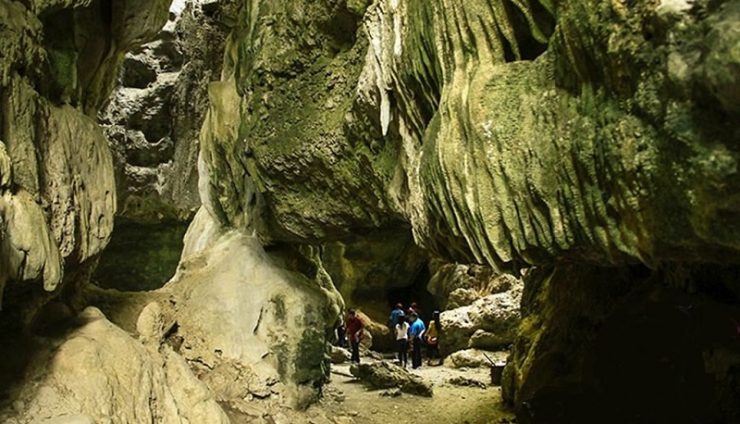THE sunlight reflected through the thorny bamboo trees, commonly known by the locals as To’e, which grew densely along the path, giving the impression of admiration for tourists on the way to Batu Cermin Cave.
Batu Cermin Cave, which is located about 20 minutes from downtown Labuan Bajo, the capital city of West Manggarai Regency, East Nusa Tenggara (NTT) Province, has become one of the attractions arranged by the central government in supporting Labuan Bajo as a super premium tourism destination.
The arrangement of Batu Cermin Cave, which is included in the Labuan Bajo National Tourism Strategic Area (NTSA) development program, was carried out through the construction of a number of facilities such as management offices, counters, cafeterias, parking areas, auditoriums, information centers, trekking routes, and toilets. In addition, there is the construction of an amphitheater and a cultural house to support local arts and cultural activities in the Batu Cermin Cave area.
Less than 10 minutes walking along the path filled with thorny bamboo trees, visitors are directed by a guide to first visit the Batu Payung tourist attraction which is located on the left side of the road by walking for about three minutes.
After visiting Batu Payung, the visitors returned along the path about 100 meters to Batu Cermin Cave. Batu Cermin Cave is located in limestone rock that stands upright, towering up to 75 meters with a width of about 300 square meters.
Komodo Sail
The cave, which is located in an area of about 19 hectares, has actually been opened and used as a tourist area for local people since 1985.
At that time, there were no fees for any local residents or tourists who visited the area on holidays or weekdays. However, since 1990, the local government has started setting a tariff to enter the area at IDR2,000/person.
This tourist attraction is also increasingly recognized by domestic and foreign tourists when the Indonesian Government held the Komodo Sail in Labuan Bajo, the western tip of Flores Island, in 2013.
Since then, every day an average of more than 100 tourists visits the tourist area of Batu Cermin Cave. Even now to visit Batu Cermin Cave, visitors can already order tickets online. The order code is then handed over to the clerk at the counter and paid for via digital money.
“We are preparing a JPHub super application or a tourism hub network, which we hope will become a super application in encouraging and supporting tourism digitization,” said Minister of Communications and Information Technology, Jhonny G. Plate.
Jhonny G. Plate explained that especially in Labuan Bajo, this is really supported, both by the ecosystem, there are Telkom, Bhakti, and the payment is supported by Bank Indonesia through QRIS.
The Minister of Communication and Information wants Batu Cermin Cave to be prepared to support international-scale activities such as the World Policewomen Congress in September 2021 and the G20 Summit in 2022. He also asked PT Telkom to provide 5G network access at tourist sites by means of mobile BTS to make it easier for tourists to take advantage of online payments.
History
Batu Cermin Cave was studied by a missionary who is also an archaeologist from the Netherlands, Theodore Verhoven, in 1951.
From these findings, Theodore Verhoven believes that Flores Island was once the seabed, based on the findings of coral and marine animal fossils attached to the cave walls, said Head of Batu Cermin Cave Tourism Destination Jhon Sunggan.
John Sunggan also showed the walls and ceiling of the cave containing fossils of fish, turtles, and coral reefs. This is one of the attractions of the cave which is always exhibited to tourists who visit the tourist attraction. Not only fossils that attract tourists, but there are other attractions, namely stalactites that plunged from the cave sky, and stalagmites sticking out of the cave floor.
Stalactites are a type of speleothem that hang from the ceiling of a cave. It includes drop stones, formed from the deposition of calcium carbonate and other minerals that are deposited in a mineral solution. While stalagmites are vertical cave formations. Stalagmites are formed from a collection of calcites that comes from dripping water (Wikipedia).
When tourists are taken further into the cave, they will find a narrow space with a hole in the sky of the cave. During the day, sunlight penetrates through the holes in the cave.
The light that reflects on the walls of the cave then reflects back to other areas in the cave so that the stone of the cave acts like a mirror. Reflection of light also makes the surface of the stone shiny, even golden to green. This natural phenomenon makes local residents call it the Batu Cermin Cave.
Now the entrance area to Batu Cermin Cave has been dressed up with various supporting facilities to pamper tourists who want to enjoy the natural beauty in the eastern city of Labuan Bajo. [antaranews/photo special]
















